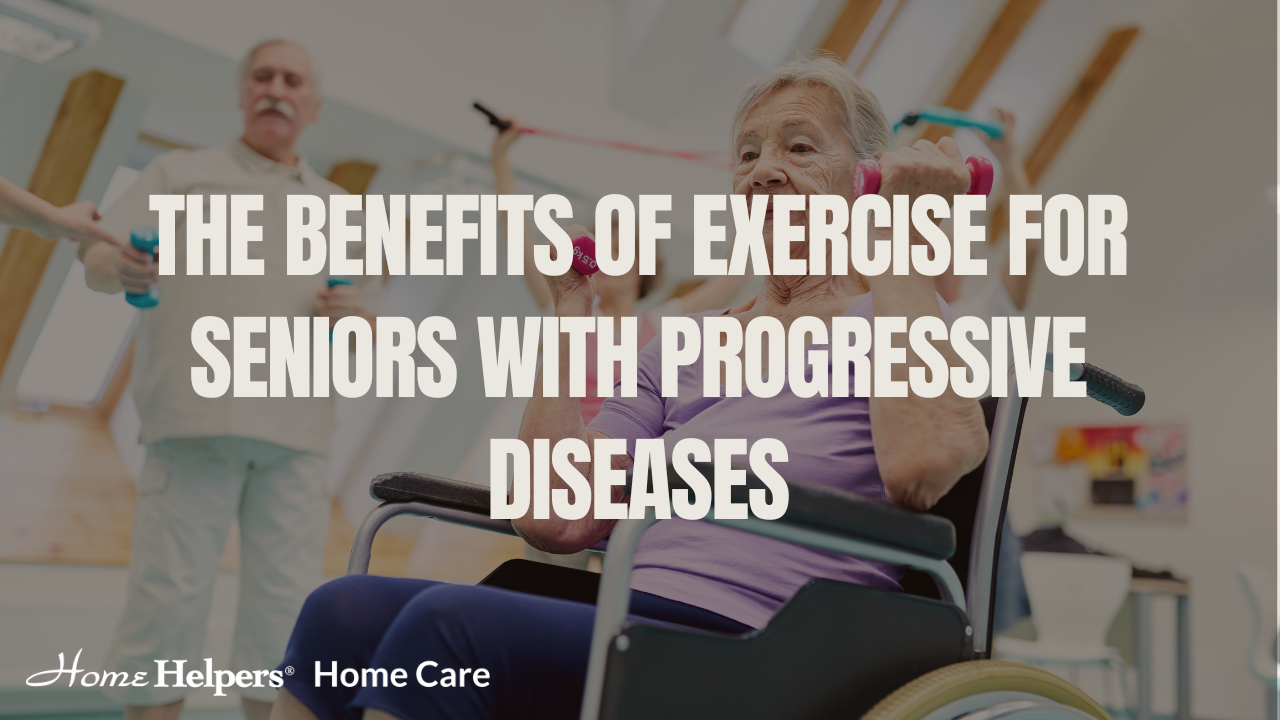The Benefits of Exercise for Seniors with Progressive Diseases in the Northern Shenandoah Valley

Author: Home Helpers Home Care
Exercise plays a vital role in maintaining health, enhancing mood, and improving quality of life—especially for seniors in the Northern Shenandoah Valley living with progressive diseases such as dementia, Parkinson's, and multiple sclerosis. Regular physical activity can help manage symptoms, increase strength and mobility, and support overall well-being. Here’s how exercise supports seniors in our region and how to make it part of a healthy routine.
1. Improving Physical Health
Exercise helps seniors strengthen their heart, muscles, and joints. Whether walking along the Green Circle Trail in Winchester or stretching in a cozy living room in Front Royal, staying active supports weight control, reduces the risk of chronic illness, and boosts energy and stamina.
2. Enhancing Mobility and Balance
Falls are one of the biggest risks to seniors’ independence. Activities like tai chi, balance exercises, and light walking can strengthen the body and improve coordination—helping older adults in our community remain confident and steady on their feet.
3. Managing Symptoms of Disease
Seniors with progressive conditions can benefit greatly from exercise:
- Dementia: May enhance memory and delay cognitive decline.
- Parkinson’s Disease: Can reduce tremors, improve movement, and increase coordination.
- Multiple Sclerosis: Helps reduce fatigue and preserve mobility and muscle strength.
4. Boosting Mental Health
Physical activity lifts spirits and improves mental health. Whether enjoying a walk at Jim Barnett Park or gardening in the backyard, seniors can experience fewer symptoms of depression and anxiety, along with a greater sense of purpose.
5. Promoting Social Interaction
Group activities at local senior centers or simply walking with a caregiver or friend provide much-needed social engagement. These moments of connection are key to emotional resilience and feeling supported.
6. Enhancing Cognitive Function
Certain exercises—like yoga, dance, or even gentle aerobic classes—can challenge both body and mind, helping maintain mental sharpness and cognitive health.
Tips for Incorporating Exercise into a Daily Routine
- Start Slowly: Begin with manageable, low-impact activities.
- Set Realistic Goals: Simple goals can keep motivation high.
- Find Enjoyable Activities: Look for options that bring joy, whether that’s walking, dancing, or stretching.
- Incorporate Variety: Mix in cardio, strength, and flexibility work.
- Stay Safe: Use proper technique and ask for support when needed.
How Home Helpers Home Care of the Northern Shenandoah Valley Can Support You
At Home Helpers Home Care, we proudly serve communities throughout the Northern Shenandoah Valley, including Winchester, Front Royal, and surrounding areas. Our caregivers help seniors stay active, safe, and engaged through:
- Personalized Exercise Plans
- Supervised Sessions for Safety
- Ongoing Encouragement
- Companionship During Activities
We believe movement is one of the best medicines—and we’re here to help local seniors live life to the fullest.
Conclusion
Exercise provides tremendous benefits for seniors living with progressive diseases, from easing symptoms to lifting mood and maintaining independence. If someone you love in the Northern Shenandoah Valley could benefit from this kind of compassionate, supportive care, we’re here to help.
Visit our website or contact our office to learn more.
#HomeHelpersShenandoahValley #WinchesterCare #SeniorWellness #WeAreHomeHelpers
Sources:
- Alzheimer’s Association. (2023). Exercise and Physical Activity. www.alz.org
- Parkinson’s Foundation. (2023). Exercise and Parkinson's. www.parkinson.org
- National Institute on Aging. (2023). Exercise and Physical Activity for Older Adults. www.nia.nih.gov
